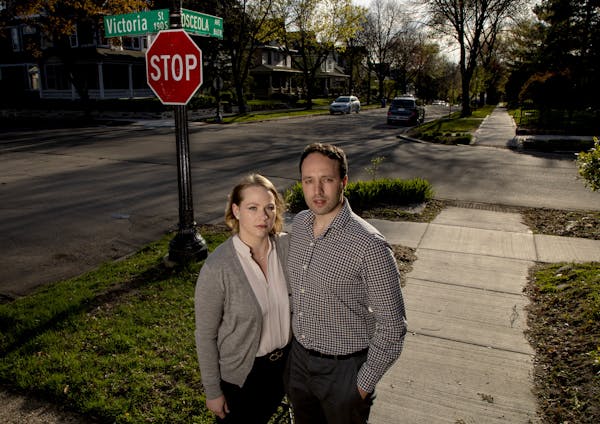Don't get Simon Taghioff wrong. He appreciates the St. Paul City Council this week cutting his street repair bill almost in half — from nearly $5,000 to about $2,500.
But the way they did it — removing charges for handicapped-accessible curb cuts from the assessments of hundreds of properties — doesn't change what he and others consider an unfair formula for fixing high-traffic streets. He said he still plans to challenge the assessments in court.
"On one hand, I'm very pleased the city has listened and I don't want that to get lost in all of this," he said of the council's move, which means refunds to about 100 homeowners and reduced bills for hundreds more. "But it's frustrating. The city had a real opportunity to engage residents and look at these options again."
At issue is the way St. Paul pays for mill and overlay projects — the repaving of busy arterial streets. The city charges half the cost of mill and overlay to property owners along those streets based on linear feet of street frontage, with the city picking up the rest. St. Paul moved to that method after the state Supreme Court in 2016 threw out St. Paul's previous system of paying for street maintenance with a right-of-way fee charged to all properties.
Under the 50% assessment, some property owners received bills of up to $8,000.
Considering that property owners on most residential streets pay significantly less for seal-coating, Taghioff and dozens of others attended City Council meetings in April to challenge the fairness of St. Paul's system. Why should homeowners pay half to repair streets bustling with traffic from all over town?
The council delayed a vote on several projects while Council President Amy Brendmoen and Council Member Rebecca Noecker huddled with public works officials to find a way to ease homeowners' burden.
At Wednesday's council meeting, Brendmoen announced a change that significantly reduces assessments for 2017 and 2018 projects, many of which have already been paid. "No one's bill will go up, but some will go down," she said Wednesday.
The savings come by cutting out the cost of the federally required curb cuts from assessments charged to property owners and paying for them from city's general fund.
"They are not mill and overlay costs, but general construction costs," Brendmoen said of her rationale for the cuts.
Taghioff agreed that move makes sense. The ramps are used by anyone who needs them as they move through the neighborhood, rather than just homeowners on that street. By the same logic, he said, shouldn't the city shift mill and overlay costs citywide? Delivery trucks and service vehicles rumbling down arterial streets benefit from mill and overlay more than homeowners living along those routes, he said.
Both Noecker and Brendmoen said they'd prefer shifting mill and overlay costs citywide, but they couldn't garner support on the council for raising the city's tax levy even higher. And, Brendmoen said, many other cities make property owners pay 100 percent of the cost.
"This is the policy that we landed on," she said. "At the end of the day, these projects cost money."
Taghioff said he will still challenge his assessment in court — even with his recently reduced bill.
"There was a lot of discussion behind closed doors. They could have opened it up to discuss substantially changing the way they do this," he said. "They could have done so much more."
James Walsh • 612-673-7428

Minnesota State Patrol celebrates diverse new class of troopers

Fired Mpls. teacher accuses management of 'cancerous rot'

Jill Biden rallies women, teachers for the Biden-Harris ticket in Bloomington speeches
Neighbors, city officials at odds over Rochester lake dam

